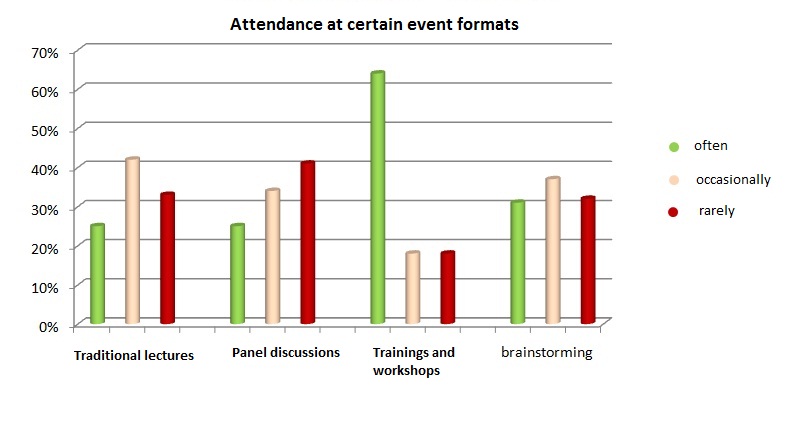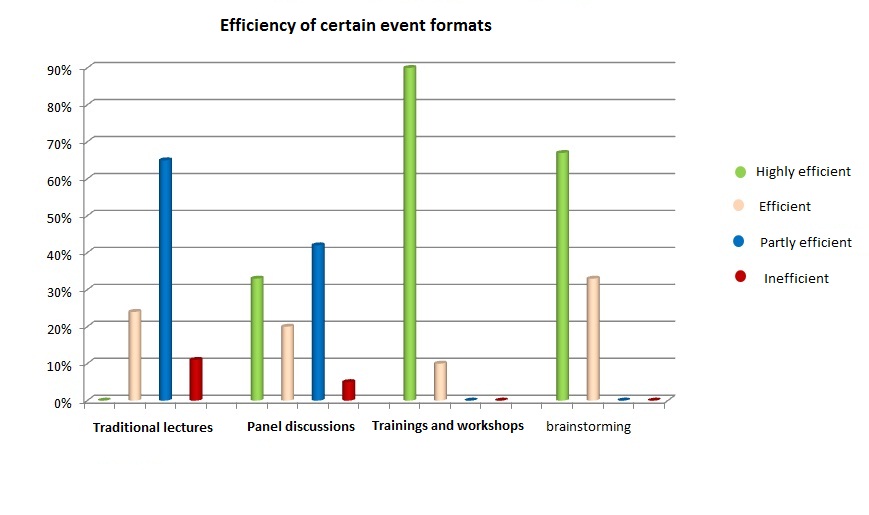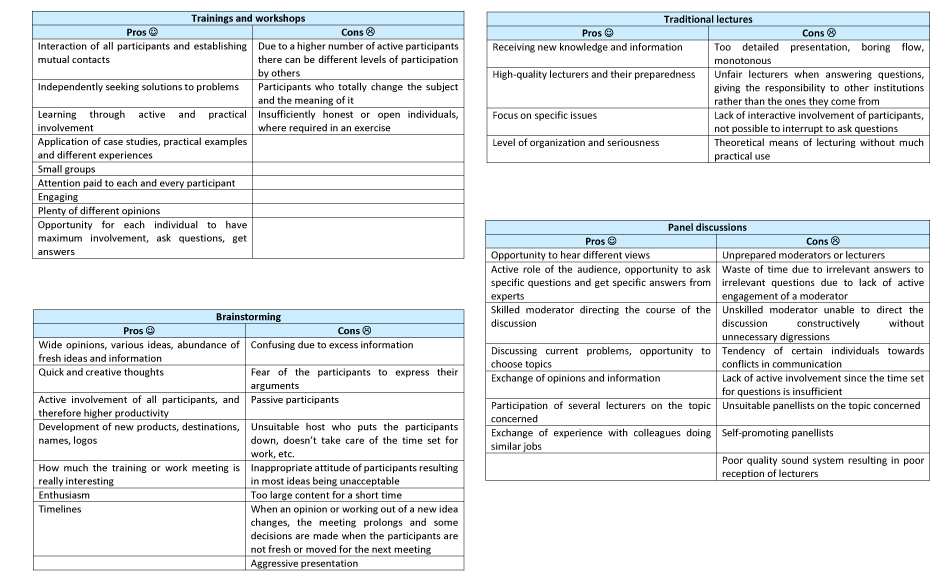Trainings and workshops are considered the most efficient format for educational events, according to the research conducted by SEEbtm magazine in the second half of 2014.
Brainstorming, as a meeting format, is also highly rated for its efficiency. The survey was participated by companies and organizations in Serbia, Montenegro, Bosnia and Herzegovina, and Croatia.
As the most efficient event formats, workshops and trainings are number one, with 45% and 25% respectively. Seminars account for 10%, while panels, B2B meetings, brainstorming and simulation make up 5% each of the respondent answers.
Based on the respondent answers, as showed in the graph, we observe that the highest attendance is at trainings and workshops, and the lowest at panels.
Traditional lectures and brainstorming also have a high share, almost 70% if we look at the summary percentage of those attending these events occasionally and often.
Trainings and workshops are definitely ahead in efficiency, rated by the respondents as very efficient – 90%, and efficient – 10%.
There is no record of their inefficiency, with only an emphasis on importance to have high-quality lecturers, and the opinion that performance at a training or workshop is more efficient the smaller the group is.
Brainstorming as an event format is also rated as highly efficient, in particular where the goal is to come up with new ideas or solutions to problems.

Panel discussions are averagely rated as partly efficient, with an emphasis on importance to have a good moderator.
In the case of a panel, we observe the widest range of ratings (highly efficient (33%), efficient (20%) and partly efficient (42%), as well as a small percentage (5%) of inefficient).
Obviously, experiences in panels are most variable, leading to the conclusion that there is no problem with the panel as an event format.
The overall experience at a panel discussion actually depends on the moderator and panellists differing from one panel to another, therefore the most different experiences in this type of event format.

Traditional lectures remain deprived of the highly efficient rating.
They are averagely rated as partly efficient (65%), depending on the topic and lecturer.
Traditional lectures also have the highest percentage of inefficiency rating (11%), with the opinion that they are inefficient, obsolete and dull.
The respondents pointed out to some other formats they find very good, as follows: working & sports meetings or educational & recreational meetings, informal gatherings of people of same professions and exchange of opinions (on an occasion), as well as targeted B2B meetings.
The conclusion is next: every meeting format has positive, but also negative sides. Some are more popular and efficient than others, but that doesn’t mean that there is only one right solution.
Be aware of good and potential bad sides of each format, try to prevent usually failings, know your audience well, so as meeting goals, and you will choose just the right format for your event.







































 Srpski
Srpski English
English